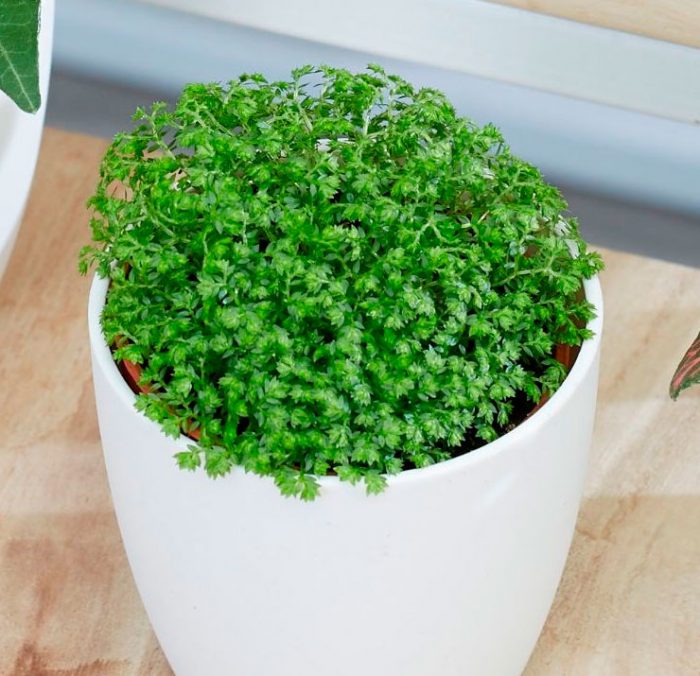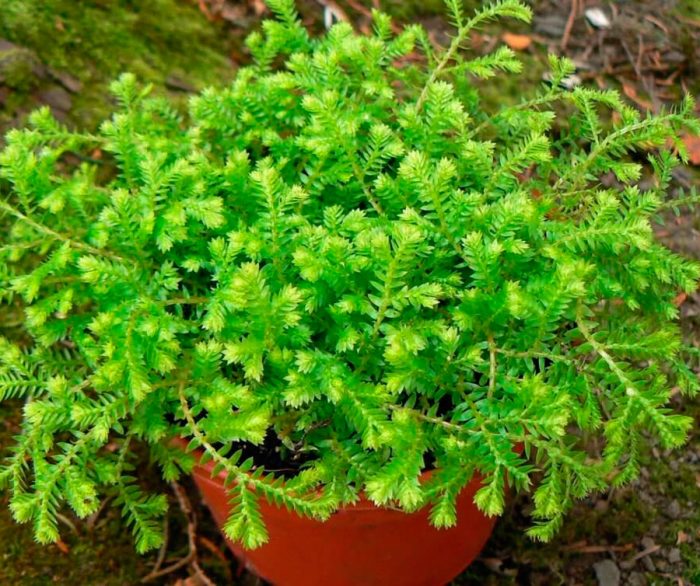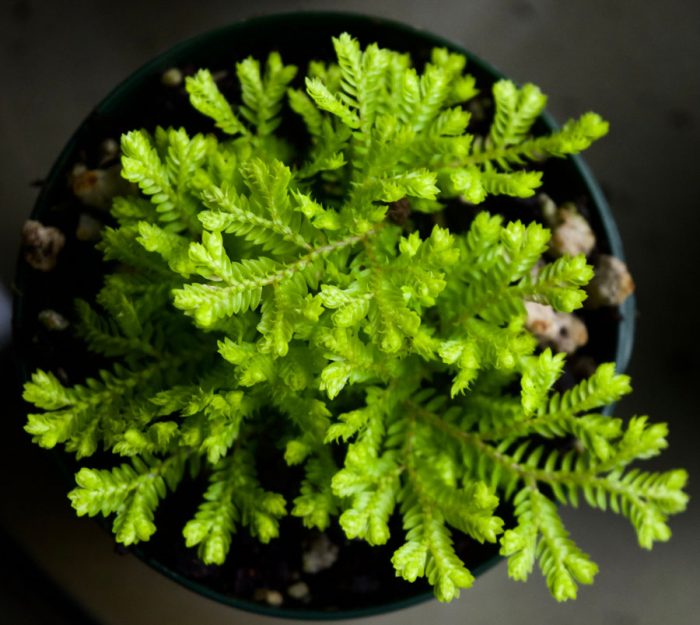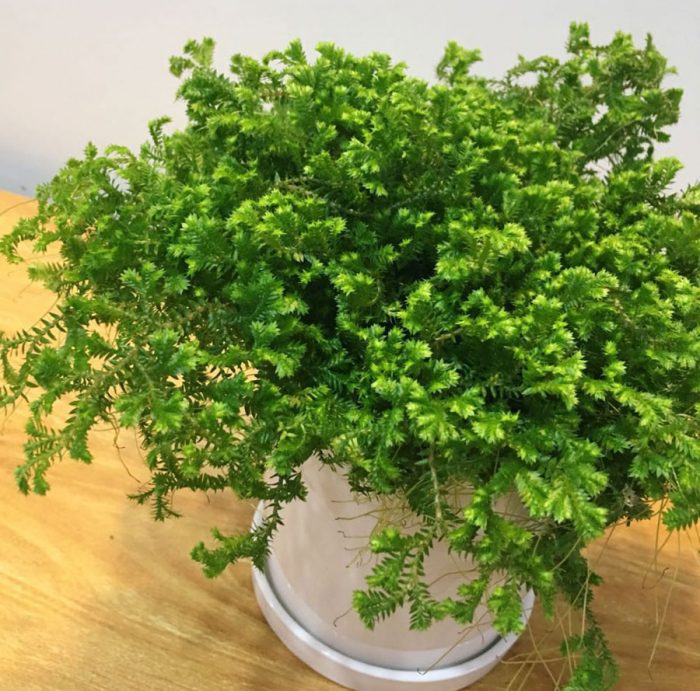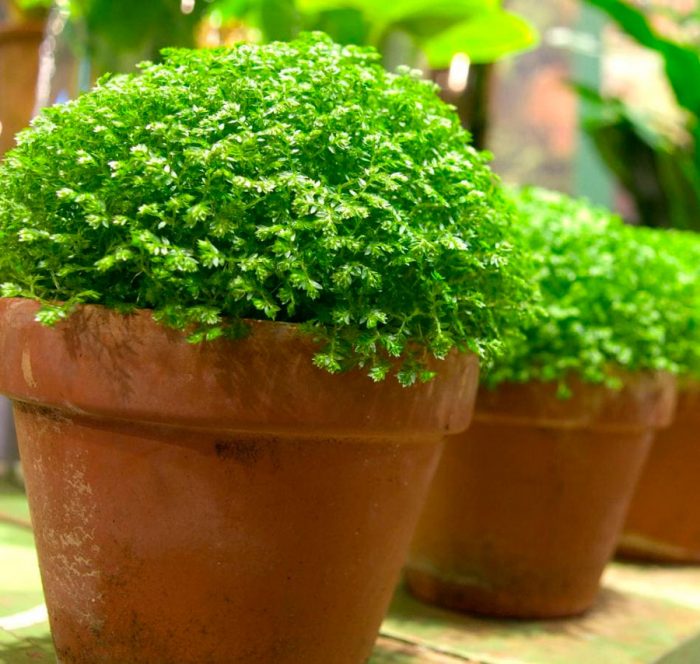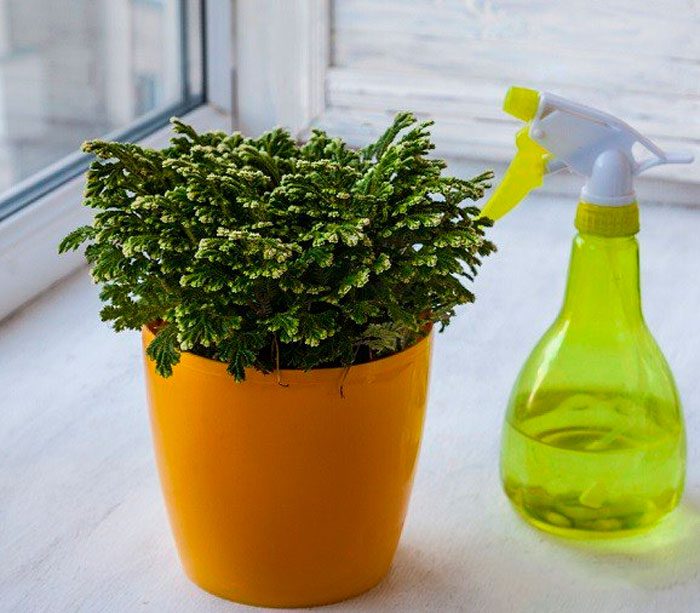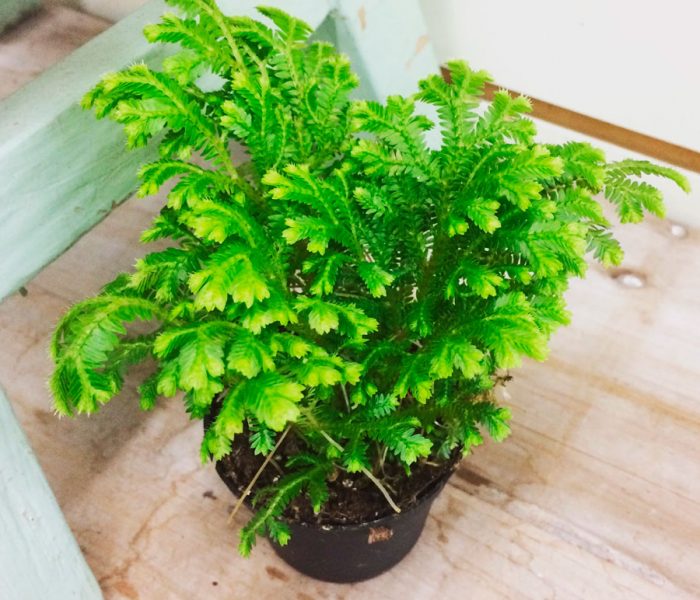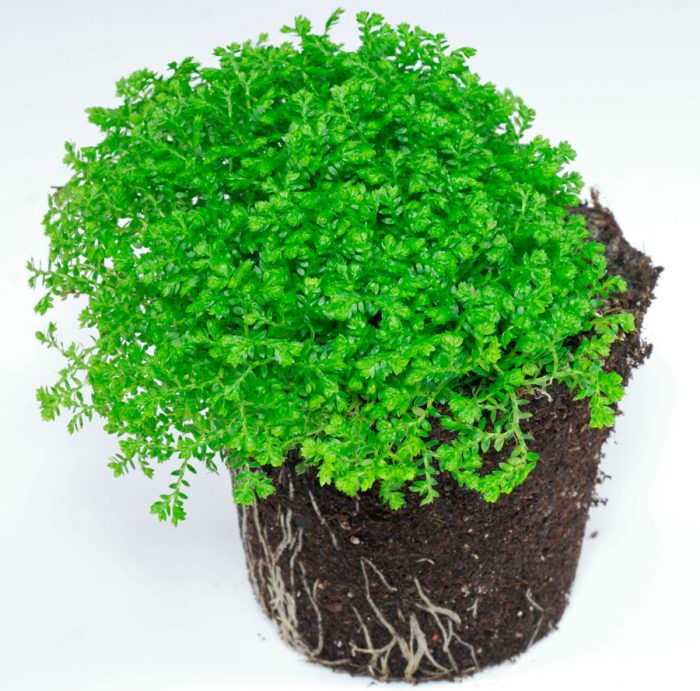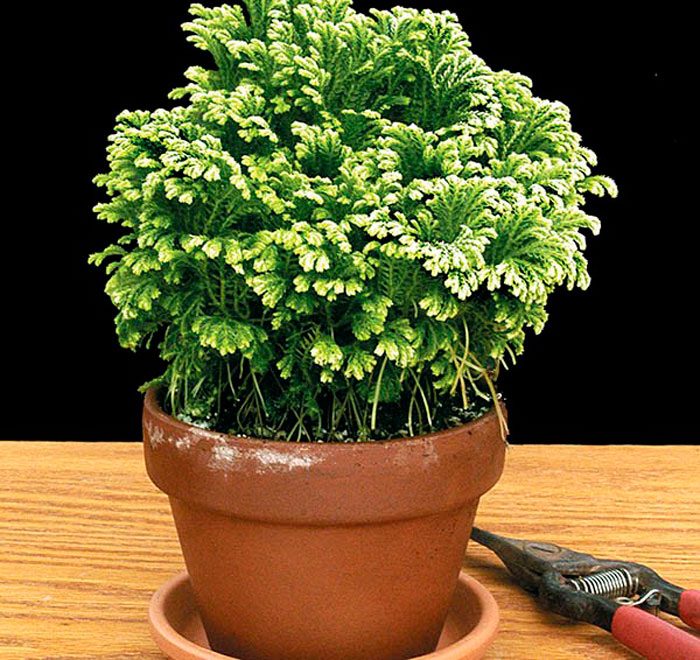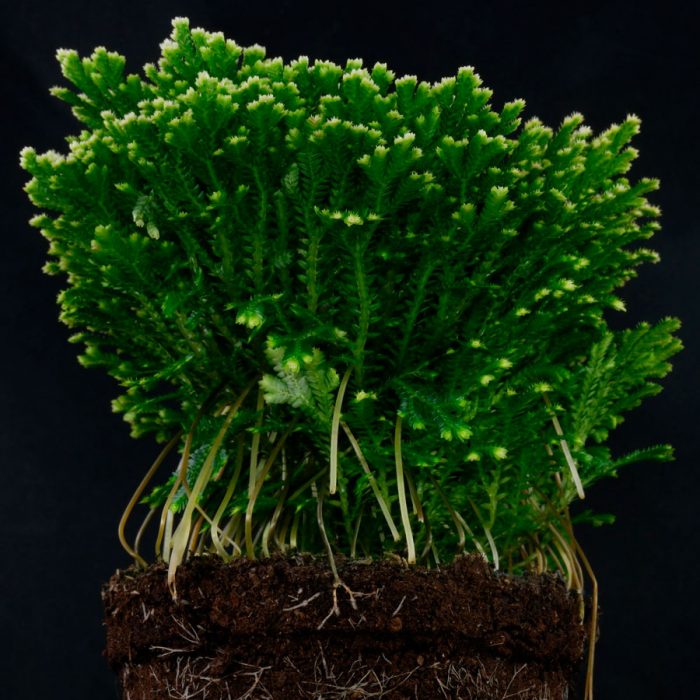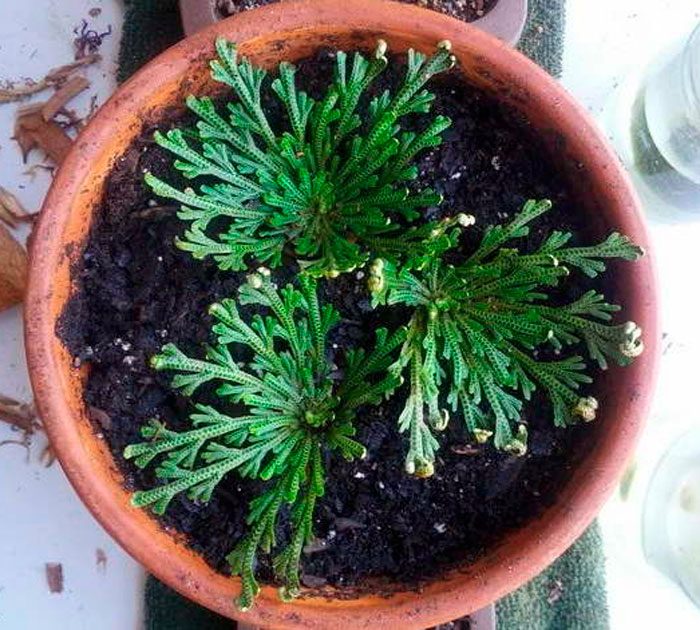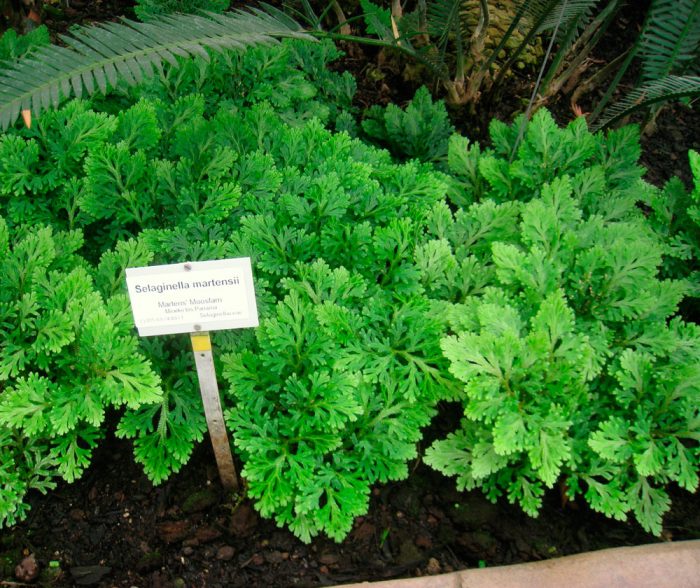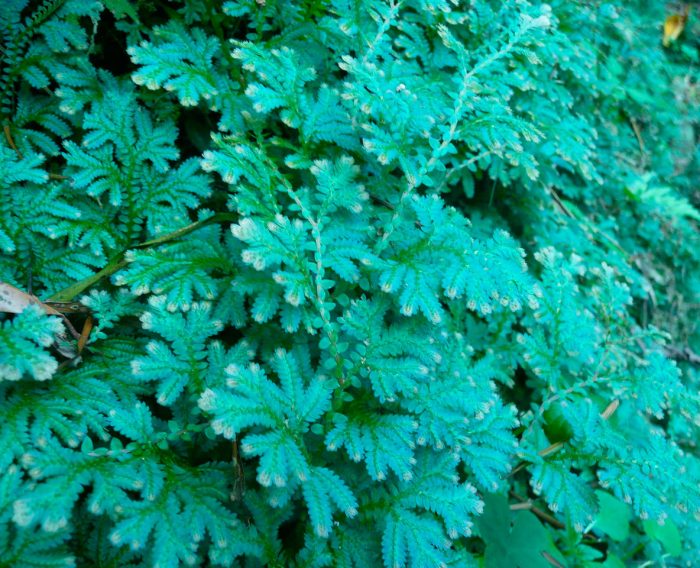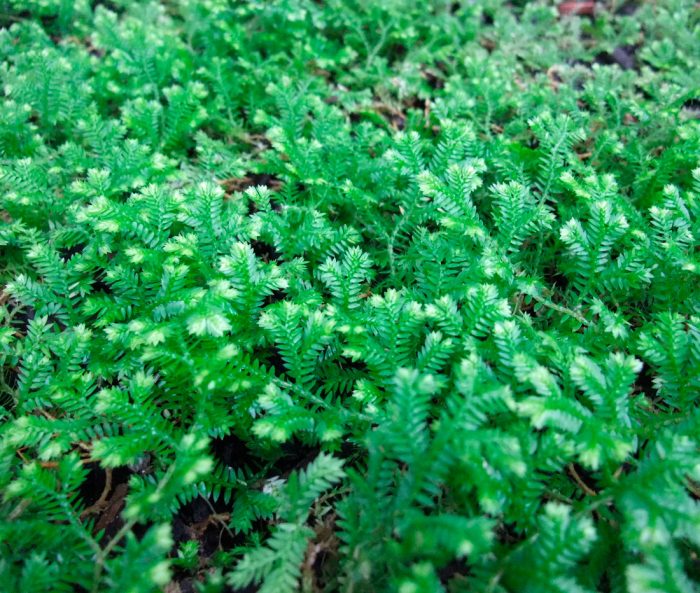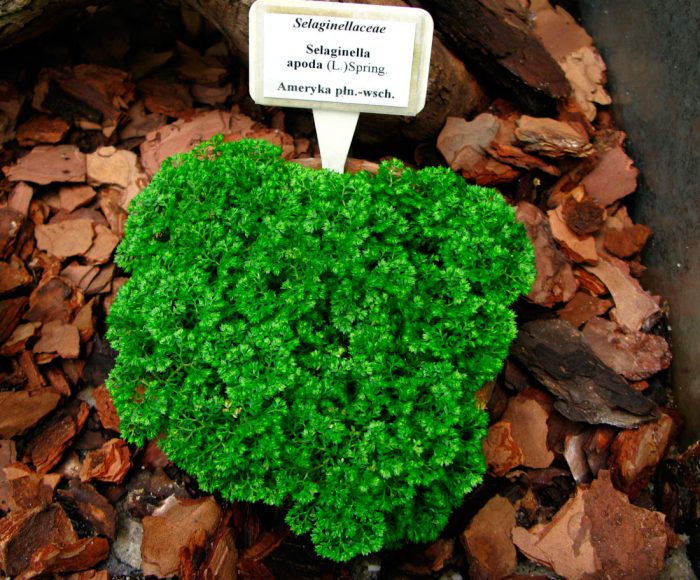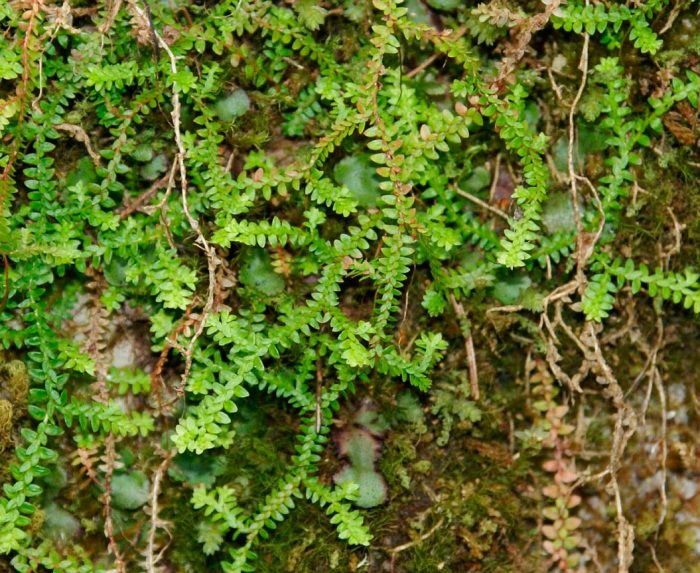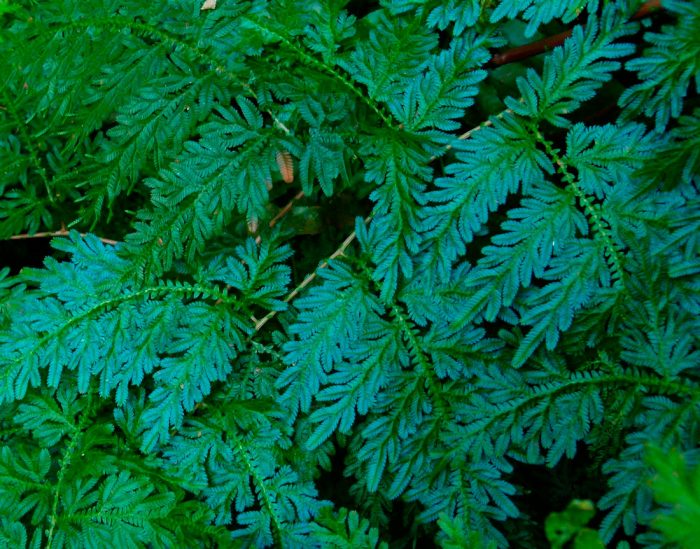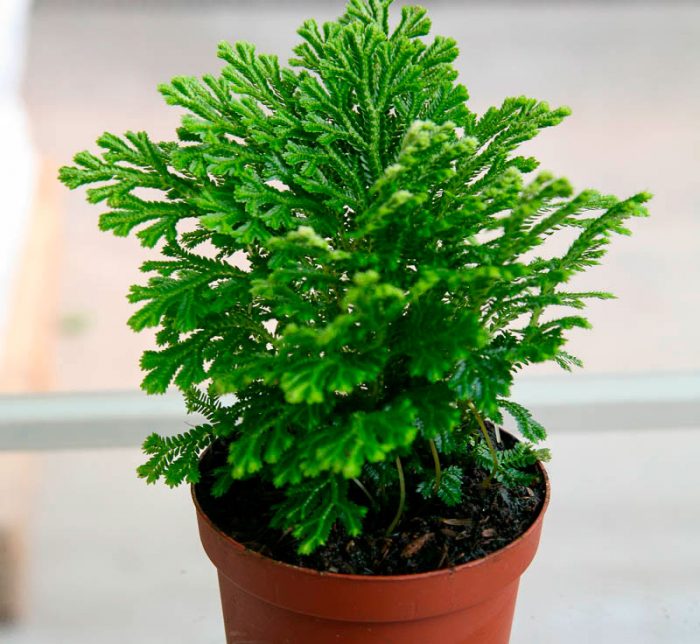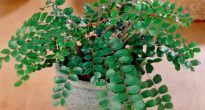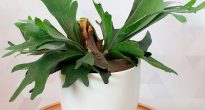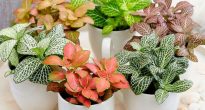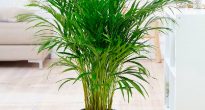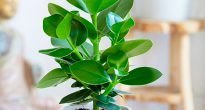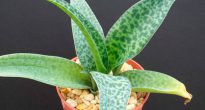Selaginella is grown at home as a ground cover plant and has a very unusual and showy appearance. Scientists have found that this plant was born when there were still dinosaurs on Earth: about 300 million years ago. This plant was able to survive not only dinosaurs, but also global cooling, as well as the emergence of civilization. But despite this, in the room conditions familiar to us, he often has a very difficult time.
Content
Features of Selaginella
Selaginella prefers to grow in the lower tiers of dense tropical forests located in South Africa and America. It can also be found in East Asian countries, where it adorns hard-to-reach rocky ledges. Also, 2 species grow in the forests of Germany and Switzerland.
In the 18th century, the Swedish biologist K. Linnaeus described Selaginella. They also determined that outwardly such a plant is similar to both moss and fern, but it does not belong to these species. It is related to the group of lycopods, which is considered the oldest on planet Earth, and this flower is also part of the higher spore plants of the Selaginellaceae family.
Selaginella is a herbaceous ground cover that is a perennial. Its stems rise slightly above the surface of the earth or spread, and they are decorated with many very small leaves (needles). The people also call this plant "Carpet fern". Carved thin shoots look extremely impressive and unusual. In indoor conditions, their length, as a rule, is no more than 10 centimeters, but in natural conditions they grow very long (up to 20 meters). In nature, this ground cover most often grows in humid places. He is able to stay in the water for a long time, and at the same time not rot and die. And he is often found in places where the sun never looks.There are also such types of selaginella, which are very similar to epiphytic plants: they climb to a decent height along the trunks of very large trees.
On the underside of the stems there are many root outgrowths, also called adventitious roots. They are needed in order to absorb nutrients and moisture directly from the air. Those species that spread along the surface of the soil can quickly take root with the help of root outgrowths, which allows them to easily spread, capturing vast territories. They create on the surface of the earth a dense evergreen very effective carpet.
Selaginella is considered the queen of indoor carpet plants, and all thanks to the unusual patterns, delicate color and bizarre foliage. The flat sheet plates, soft to the touch, reach only 0.5 cm in length, they can be both shiny and matte. They can have different shapes, for example: needle, round or spiral. The leaf plates are arranged in a pair of rows, and they overlap each other, which is similar to both tiles and fish scales. Due to this, this ground cover has similarities with a part of conifers and with a fern. Also of particular interest is the color of the foliage. In some species, the leaves are pale green, in others they are dark green with a fancy pattern of white or yellow. However, you can also find species in which the foliage is almost black with a metallic sheen. Some of the stems of such a plant have small spikelets with sporangia of various shapes on the tops. A large number of small or several pieces of relatively large spores mature in them. Depending on the species, tubers, thickenings or bulbs are formed on the stems of the plant, which are used by flower growers for the reproduction of selaginella. Its root system is superficial. Throughout the year, such a ground cover grows evenly, it does not have a pronounced dormant period or growing season.
Caring for Selaginella at home
Indoor selaginella is a rather demanding and whimsical plant, which is definitely worth considering if you want to decorate your home with it. Despite the fact that the history of its existence is several million years old, when grown in indoor conditions, such a flower can be destroyed by direct scorching rays of the sun or excessively low air humidity. In order for this ground cover to be as effective as possible, it is necessary to learn how to properly care for it.
Illumination
Despite the fact that in nature some species grow in deserts, when cultivating such a plant in indoor conditions, it is highly discouraged to expose its foliage to direct sunlight. The fact is that its leaves are very delicate, and burns can form on them. In this regard, it is better not to grow such a plant on a south-facing windowsill. West and east windows are best suited for it: the lighting there is less bright and more diffused. If it is not too dark on the north-facing window sill, then it can also be used to accommodate selaginella. But keep in mind that if there is too little light, then the plant will lose its spectacular color, and this will also have an extremely negative effect on its decorative effect.
The bush will grow quite normally in a room with artificial lighting, as it does not require sunlight. The fact is that under natural conditions, this ground cover prefers to grow in the shade of large trees, and the sun's rays rarely reach such places, and sometimes they do not get there at all. Selaginella is perfectly adapted to changes in light intensity throughout the year, and in winter she does not need additional lighting.
When choosing a place suitable for a plant, it is necessary to take into account that it reacts extremely negatively to drafts, as well as to direct rays of the sun.Therefore, it is recommended to choose a quiet place for such a flower, located in a small partial shade in the back of the room.
Temperature regime
Remember that the optimum temperature required for normal growth and development of the bush depends on the type of selaginella. Some species are grown all year round at temperatures ranging from 18 to 20 degrees. There are also species that are able to grow normally at an air temperature of 12 to 21 degrees. Too high temperatures have a detrimental effect on any species. Because of this, the bush darkens and foliage begins to fly around it. When growing selaginella scaly, remember that if it is hot in the room for a long time, and also if it does not have enough water, then it will fall into cryptobiosis (its branches will curl up, and the bush will look more like a ball). Even a short-term increase or decrease in air temperature can have an extremely negative effect on the appearance of the plant.
Watering
It is necessary to water the flower systematically and abundantly even in summer, even in winter. To do this, you can use both bottom irrigation (through the sump) and conventional (pouring water directly onto the surface of the substrate). Before using bottom watering, make sure there are drainage holes in the bottom of the tank.
Suitable water for irrigation should be well-settled and warm. Tap water cannot be used for this purpose. Otherwise, rust, specks and limescale will form on the surface of the shoots. In this case, it will be impossible to correct the situation, since the decorative effect of the plant will be lost. In this regard, it is optimal to use rainwater or filtered water. If you only have tap water, then water the bush with it only after it has settled well (at least 2 days).
Make sure that the substrate in the container does not dry out too much, especially its middle layer. Loosen the surface regularly to improve aeration. From time to time for selaginella, you can arrange the following procedure: when the time for watering comes, the bush along with the container is immersed in a basin filled with water, the temperature of which should be slightly higher than room temperature. Liquid fertilizers are also added to the water. This ground cover will absorb as much nutrients and moisture as it needs. After a while, the plant is pulled out of the basin and waited for excess liquid to drain from the pot. Then the bush is again put in its permanent place.
Despite the fact that specimens of selaginella growing in nature are able to easily adapt to both wetlands and dry soil, indoor lymphatics cannot. They react extremely negatively to both stagnation of liquid in the root system and to drying out of the substrate.
Air humidity
Since this plant is native to the tropics, it needs high humidity. There are various ways to increase the moisture level. For example, you can pour wet expanded clay or moss into the pallet and put a pot with a bush on it, and you can also moisten the foliage several times a day from a spray bottle using clean and warm water. If possible, then purchase a humidifier.
The optimum level of humidity is from 65 to 85 percent. To increase the humidity, you can use an aquarium, terrarium, or flowerpot. Sphagnum and small stones should be placed on its bottom. They are poured with so much water that they are well nourished. Drain off excess liquid and place a flowerpot inside the container. This method allows you to increase the humidity level from 20 to 30 percent. If necessary, add water to the container, remember that the moss should always be moist. If you choose a terrarium for growing Selaginella, then provide it with good air ventilation. Do not forget to put stones in the pallet under the container with the flower.
Suitable pot
Such a ground cover has a superficial root system, and its roots are short. That is why a suitable pot should not be too tall. In this case, the container is chosen rather wide, since the bush grows very lush and its greenery should not be crowded. Ceramic or clay containers should be preferred to plastic pots. There must be drainage holes at the bottom of the container. Before planting a flower, a drainage layer with a thickness of 20 to 30 mm is made at the bottom, for this you can use pebbles, expanded clay or broken brick. The pallet must also be present, it must be quite high. Place wet moss in it, and place a container with a flower on top.
In addition to pots for the cultivation of such a plow, you can use a bonsai (wide bowl), a flower pot, a tropical bottle, a glass vessel, and a terrarium. In specialized stores, you can find special containers that are designed for the cultivation of ground cover. The containers can have various original shapes.
Suitable substrate
Such a plant needs a loose and light soil mixture that absorbs moisture well and allows air to pass through. Also, the substrate should be fertile, slightly acidic or neutral. The most suitable soil mixture should include turf or garden soil and peat (1: 1). To make it looser, it is mixed with a small amount of charcoal and finely chopped sphagnum. Before using the soil mixture for its intended purpose, it is disinfected by steaming or calcining. Also, for growing this plant, you can use a ready-made soil mixture for begonias or saintpaulias.
Transfer
The plant reacts extremely negatively to excessively frequent transplants. This procedure is carried out only if necessary, about once every couple of years. Selaginella tolerates the transplant best in spring, but if necessary, it can be carried out in summer and autumn. Most often, the transplant is carried out because the root system is very cramped in the pot. Inspect the pot, if the roots are peeking out of the drainage holes or they have crawled out onto the surface of the substrate, then the bush needs an urgent transplant. Also, a bush that has a lot of branches hanging on the sides of the pot needs a transplant. In this case, a larger diameter container is used for transplantation. Also, a heavily overgrown bush can be divided into several parts, which are planted in individual pots.
Fertilizer
Selaginella is fed from March to September. During the first year, a young bush is fertilized once every 20-30 days. To do this, use a liquid fertilizer for indoor ornamental deciduous plants, pay attention to the fact that the nitrogen content in it should be increased. In the second year, if the bush has not been transplanted into a new substrate, the frequency of fertilizing is increased to 2-3 times a month. The fact is that in this case the soil mixture in the pot is depleted and the plant needs more fertilizers. The fertilizer dosage should be 2 or 3 times less than that recommended by the manufacturer. Upon completion of feeding, it is recommended to loosen the surface of the substrate in the container.
Pruning
Only old bushes that have become less attractive are pruned. As a rule, the plant is pruned 1 year after planting. All stems must be shortened by more than half, in this case the bush will be transformed due to the active growth of new lateral shoots from dormant buds. In some cases, due to pruning, flower growers manage to give the bush an unusual spectacular shape.
Reproduction methods
For reproduction selaginella use methods such as: dividing the bush, cuttings and seed (spores).
Dividing the bush
Most often, growers propagate such a plant by dividing the bush, since this method is the simplest and fastest.Take an adult, well-grown bush and divide it into several parts. Each of these parts, even if it is very small, will easily take root after planting in a separate pot.
Cuttings
First, the cuttings are prepared. To do this, cut off a part of the shoot from the bush, the length of which should not be less than 30 mm. To root it, take a container with a lid filled with a moistened mixture of peat and sand. Put a piece on its surface, sprinkle one of the ends with a small amount of substrate and cover the container with a lid. Move the container to a warm and shaded place. After the cutting has small roots, it can be planted in a separate small pot. In order for the plant to be more spectacular and dense, several cuttings are planted in one container at once (for example, five pieces). When planting cuttings, make sure that their slices do not come into contact with each other.
For rooting cuttings, you can use a regular glass of water, to which a special rooting agent is added, for example, Zircon or Kornevin. From above, the container is covered with a transparent film, and then put it in a shaded place where it is always warm. If you do everything right, then after a little time roots will appear on the cuttings and they can be planted in pots.
Selaginella's disease
Home-grown selaginella are highly resistant to most diseases, which are very common in exotic tropical plants. Such a flower is distinguished by its vitality and various fungi, as well as viruses, are not afraid of it.
To understand whether a bush is healthy or not, pay attention to its foliage. Lush, strong and dense foliage indicates that the plant is absolutely healthy and is kept in favorable conditions for it.
If this poultry is not provided with suitable care, problems can begin with it. Possible problems:
- Mold on the surface of the substrate, and the shoots have lost their turgor and faded... Examine the pallet and substrate in the container. This problem can occur if liquid regularly stagnates in the soil mixture. Stop all watering for a while, and cut off parts of the bush that have dried up or have lost their spectacular appearance. If this does not help, then transplant the flower into a fresh substrate that is suitable in composition, while cutting out all rotten roots during transplantation. Make sure that there is no further waterlogging of the substrate.
- The foliage turns yellow and flies... The bush feels a lack of fluid. Adjust the watering mode.
- Dark spots on the surface of leaf plates... They appear when the room is too hot. Try to lower the temperature. To do this, you can moisten the air and the plant itself with warm water from a spray bottle several times a day.
- Foliage loses its decorative effect... Due to excessively intense lighting, the foliage becomes faded, and under the influence of the direct scorching rays of the sun, it can completely burn out. Be sure to shade the bush from the sun.
- Slow growth, the bush looks lethargic... This is due to the fact that the flower is experiencing an acute lack of nutrients. Feed him if necessary. In some cases, in order to save a flower, it must be transplanted into a fresh, fertile soil mixture.
- The stems are stretched, thinner, and the foliage loses its decorative effect... The plant lacks light. Place it in a brighter place or provide artificial lighting for it.
- The foliage curled up and began to dry... Either the air humidity is very low, or the bush was exposed to a draft, or the temperature regime was violated.
- The leaves have become faded... Hard water is used for irrigation. What water is suitable for a given plant is described in great detail above.
Pests
Such a plant is quite resistant to pests and is practically not damaged by them.
Selaginella species with photos and names
Almost 700 species of Selaginella are known today. However, only 25 species are cultivated at home. Below will be described those of them that are most popular with florists.
Selaginella martensii
This type is the most popular among flower growers. If we compare it with other species, then this is a rather large plant, which can reach a height of about 0.3 m. The stems are decorated with dense bright foliage, which is very small. She creates unusual spectacular patterns on the shoots. Such a flower is fast-growing and moisture-loving, and a place with moderate lighting should be chosen for it. Over time, straight shoots overgrow with root outgrowths and droop to the surface of the soil, where after a while they take root.
Selaginella uncinata (Selaginella uncinata)
Outwardly, the bush looks like a huge spectacular snowflake. Its stems, tightly pressed against each other, have pubescence on the surface, and they are decorated with pale blue small needle leaves.
Selaginella kraussiana
This species is cultivated as an ampelous plant. Shoots can be up to about 30 centimeters long. They grow very quickly and hang effectively from the sides of the pot.
Selaginella apoda
This species is the smallest. He comes from North America. The stem of such a plant is practically invisible, only foliage is noticeable, which spreads along the surface of the soil, creating a soft and dense spectacular carpet. Outwardly, this plant is similar to moss. Already in the twentieth century, this unpretentious and spectacular look has become very popular in room culture. It is cultivated at home as an ampelous plant. Differs in high moisture content.
Selaginella Swiss (Selaginella helvetica)
Such a plant is widespread in the mountainous regions of the Caucasus, Europe and the Far East. Unlike other species, the stems are serpentine. The greenish leaf plates are perpendicular and create very unusual graphic patterns.
Selaginella willdenowii
Unlike other species, such a flower has the shape of a bush. Its highly branching stems are decorated with dense foliage, which consists of many very small leaf plates attached to the branches in 2 rows in the form of tiles. Outwardly, this plant resembles miniature coniferous branches. This kind, if desired, can be cultivated in pots as an ampelous plant.
Selaginella scaly (Selaginella lepidophylla)
This species differs from the rest in its extreme unusualness. His homeland is the tropical deserts of Mexico Chihuahua. In nature, during a long dry and hot period, this ground cover has a suspension of life processes, and the bush itself curls up into a ball. In this state, the bush can be for an incredibly long time, up to 100 years, and as soon as conditions become favorable again, it will revive. Thanks to this feature, the flower has a second name - "rose of Jericho", as well as "Resurrection flower". When dry, this flower is stored in a wardrobe, as it has the ability to repel various insects, including moths. In a dry state, this plant can be stored for a whole hundred years. Such an unusual plant in a specialized store can be bought in the state of a dry ball (cryptobiosis). After you come home and immerse the bush and pot in water, it will immediately come to life. It will transform very quickly, literally at the same hour its branches will quickly straighten and turn green. After a very short time (about 24 hours), the dry ball will become a spectacular lush bush. Its numerous shoots will be covered with bunches of dissected small leaf plates.
Useful properties of Selaginella
For a long time, Hindus and Chinese have used different parts of Selaginella to treat various ailments.This plant is known to help reduce heat and has cleansing properties. It was used in the treatment of diseases of the genitourinary system and liver, as well as to improve the condition of a person who has suffered a sunstroke. In some countries, official medicine uses the spores of such a plant as a powder for bedsores. To date, studies have shown that some of the selaginella species contain substances that are very useful in the treatment of malignant tumors.
This plant does not contain poison in its composition; therefore, it is perfect for decorating apartments where there are pets and small children. Before decorating your home with it, you should take into account that selaginella is a spore plant, in this regard, you will not be able to wait for it to bloom. However, the lack of flowers does not make this plant any less attractive. It has openwork rich green leaves. If such a baloon is well and properly looked after, it will look very impressive all year round.

